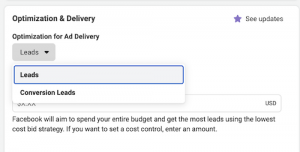As a marketer, you might have asked yourself this question every time when launching a new marketing campaign: “What value will it add for the business?”
Every new campaign for a marketeer brings with it uncertainty and risk, but knowing when and how to measure the results of their actions can be key to not only achieving success but also replicating it. Running any marketing campaigns without measuring ROI can become a black hole, constant investment without any understanding of what return it brings. How can you be sure if you keep shooting in the dark?
In 2019 alone, the global advertising and marketing spend was up 4.9% – at an amount of $ 1.9 trillion, led by spending on mobile media, product placement, content marketing etc. The stats prove how much value businesses are now giving marketing as part of overall business strategy. With businesses investing an enormous amount on marketing budgets, it can already be considered one of the main elements of a company’s annual spending.
Marketers go above and beyond the traditional measures to optimize their strategies and stay ahead of the competition. In an effort to do so, there have been innumerable tools and software developed which have an ability to analyze marketing insights like never before. Without insights, marketers would struggle to make important decisions. However, all insights, be it clicks, impressions, or anything else, has ROI at its foundation.
As easy as it sounds, most companies suffer since they are not able to estimate an accurate ROI for their marketing efforts. Without ROI, there is no direction for businesses to determine if the investment made within certain campaigns is actually generating any net positive value. To help you ensure that you invest your resources carefully and manage your finances in an efficient way, we have compiled a guide to measuring the ROI of your marketing efforts.
What is ROI?
If you were asked to choose between launching a new advertising campaign or, alternatively, spending that money on a social media campaign, which would you select and why? Naturally, you would be more inclined towards the one that benefits your company in both the short-term and the long-term. In order to identify the best option based on the right factors for your business, one way you could proceed would be to look at the ROI linked with each strategy.
ROI is a metric of profitability that is extensively used by companies around the world to quantitatively measure the return or the benefits of a particular investment that they wish to make. In mathematical terms, it is the ratio of the gains made from investment as opposed to its cost. ROI is usually presented as a percentage of the ratio above.
ROI is extremely helpful in measuring the profitability of a stand-alone investment, along with comparing returns from other investments as well. ROI is one of the key metrics in business analysis. Other key metrics include cash flow measures such as Net Present Value (NPV) and Internal Rate of Return (IRR).
How to calculate a simple ROI?
There are several ways to approach how to calculate ROI, depending on your business type, you may prefer one over the other.
The ROI of a marketing campaign can be simply calculated through either of the two formulae listed below:
- Simple ROI (1) = (Net Return on Investment/Cost of Investment) x 100%
- Simple ROI (2) = (Final value of Investment- Initial Value of Investment/ Cost of investment) x 100
How to calculate the ROI of a marketing campaign when there is existing organic growth?
The above calculation for ROI may seem simple. However, complexities may arise when calculating ROI for a marketing campaign. You might have to consult a specialist in this regard, such as a marketing analyst or a good accountant who specialises in working with marketing agencies. The reason is that you have to make multiple assumptions and adjustments to get an accurate figure. An assumption about the monthly sales figure can or cannot be directly proportional to how well we conduct the campaign.
These assumptions are important as they allow the business teams to monitor and evaluate monthly or annual comparisons prior to the campaign launch. Without any comparisons between actual and projected figures, the marketing ROI does not hold any real meaning. These comparisons help measure the impact of marketing campaigns and make predictions more accurate.
For instance, if you are setting up a 12-month marketing campaign called X-campaign, before you calculate your monthly ROI you might want to adjust for figures which are already impacting the return, such as sales in this case. If the sales are on an average growing 5% every month before the campaigns launch, then the ROI calculation for the particular marketing campaign should rule out 5% from the sales figure when calculating the ROI for X-campaign.
The resulting formula to calculate ROI will be:
Return on Investment on X-campaign = (Sales growth after X-campaign Initiation – Average Organic Sales growth pre X-campaign – Marketing cost for X-campaign) / Marketing cost for x-campaign
Here is an example:
Let’s suppose your company’s organic sales growth is an average of 5% every month before any new campaigns are implemented. You decide to run a £3000 advertising campaign for a month to boost sales during the Christmas season. The total sales growth of £5000 for the month is achieved. As mentioned earlier, £250 (that is 5% of the total 5000) of that amount is the average organic sales growth estimated from your company’s past monthly sales data. Here’s how we can proceed with the calculation.
(5000-250-3000)/3000 = 0.583*100 = 58.33%
From the above example, if we didn’t consider taking out organic growth, the ROI would be 66.67%. After ruling out organic growth, we get a percentage of 58.33%. These results conclude that the advertising marketing campaign generated an ROI of 58.33%; this can be compared with other campaigns, the one with the highest ROI should be the one that you should proceed with.

What potential challenges can you face when calculating marketing ROI?
Here are the two major challenges that you might come across when calculating marketing ROI:
1.A steady and time-consuming process
No marketing strategy is meant to give you instant returns. You might have made an accurate estimation of the ROI of your campaign, but the real process begins after that. Marketing is a slow and steady process that helps your company prosper in the long-term. It also requires consistent efforts along the way. You cannot expect your sales to increase in a matter of months on all marketing efforts. The monthly changes we use for calculating ROI to ease our calculation procedure leads to a result that might take several months or even a whole year to achieve.
You might also witness the ROI in the first few months to be very low. This is because it takes time for a marketing campaign to fully assimilate into the target market. However, after some months you may witness growth in your sales and might witness the ROI of your marketing campaign to gradually increase its pace.
It is not possible to calculate the ROI of a marketing campaign unless you are measuring the performance of your campaign in an accurate way. There are several tools that have made it easier to measure the performance of a marketing campaign – Google Analytics is one of them. The wholesome tool has made it easier to track figures which will help you calculate your ROI by providing sales and other metrics that relate to a specific campaign.
2.Focusing on the non-critical factors
One other major challenge is that the majority of the marketing campaigns are strategized considering the number of other factors which are important for driving up sales. Marketing agencies are very well aware of the fact that their clients want to see instant results, results in terms of financial gains. For this reason, they are able to modify the ROI figures by including in other soft metrics that might not have a noticeable impact on your sales at all. Soft metrics include increasing social media likes and shares, increasing the number of views, or increasing brand awareness. Therefore, it is important to distinguish between what core elements to focus on for your campaign in the planning phase. Companies should not focus on elements that provide them with benefits that are unable to drive up sales and provide no monetary value. Our next section focuses on the key marketing metrics that can add value to your marketing ROI metric.
5 key marketing metrics to measure along marketing ROI to better evaluate the performance
Here is a list of 5 key marketing metrics you should be implementing and tracking to make your digital marketing a success:
1. Unique monthly visitors
It is an important metric that reveals information about the number of different people who visited your website in a certain month. This is one of the key metrics you can use to keep track of your website performance and drive more traffic to your website content in the future. With the help of this metric, you can declare whether your marketing campaign is a success or not. If you are able to attract a number of unique visitors as planned, it could be used to measure the success of your marketing campaign regardless of any financial gains. This metric can easily be tracked from any website analytical tool that is available for digital marketing purposes.
2. Cost per acquisition
Cost per acquisition is the cost incurred to gain a customer and is very much like cost per lead metric; the only difference being that it focuses entirely on leads that are successfully converted. CPA is simpler to estimate for paid campaigns as compared to SEO initiatives.
3. Keyword average ranking
Keyword average ranking tells you about the average ranking of your target keywords on search engines, like Google, Bing etc. The greater the average ranking of the keyword, the more organic traffic it is able to generate. And the more traffic you are able to generate, the higher the chances of conversions. Thus, this is one of the most important metrics for your digital marketing to become a success. If you are not already monitoring your keyword ranking, you should start tracking it and work towards making your ranks better.
4. Traffic generation through channels
Another metric you can employ to estimate the ROI of your marketing campaign is by carefully examining the traffic generated by other channels. By keeping a track of this, you can get a clear idea of which channels are helping you generate the most volume of traffic. Let’s suppose that the organic searches are bringing the most traffic on your website. Having this information will give you the reassurance that your efforts and resource investment on SEO practices is paying off well. As a result, you can strategically develop your marketing campaign
This metric can also help you distinguish between low-rewarding and high-rewarding channels. You may use Google Analytics to extract the data on the traffic generated from different channels.
5. Return on AD spend(ROAS)
This metric gives you an idea of how well your ad campaign is going in terms of revenue generation. It does not consider various other costs such as cost of goods sold. ROAS can be extremely helpful if you are somewhat successful in linking revenue to your marketing efforts. However, you will still need to assess and analyze your profit margin to determine the actual percentage of ROAS at which your company will earn a profit. Your accountant should be able to assist in this matter.
Return-on-ad-spend can be calculated using the following formula:
ROAS = (Revenue/Total Ad Spend)*100
How can your accountant help with calculating your metrics?
An accountant is a professional who deals with complex financial reports, balance sheets, income statements, tax reports and other financial documents on a regular basis. Not only do they decipher comprehensive reports into understandable pieces of information, but they also ensure regular monitoring of key financial accounts.
Accountants deal with various types of companies from different industries. They understand specific financial and managerial needs of different types of businesses. Their vast knowledge is a product of day-to-day interaction with different entrepreneurs and members of financial institutions regularly. Hence, a professional accountant understands what key metrics you should be implementing and tracking for your business to ensure growth and stability or to measure the success of certain projects.
Once you implement the correct key metrics for your business successfully, you should then let your accountant track them for you as well. The reason being is that you might not have sufficient financial knowledge and experience to calculate those metrics accurately. However, if you have sufficient experience, then you are well and good to proceed. Any erroneous calculation might lead you to make incorrect decisions. The triggering of a poor-decision making process might cost you substantially in terms of finances and growth.
How to implement metrics in your management reporting or performance reports?
Here’s how you can implement effective metrics in your management reporting:
1. Start by defining the metrics
To benchmark, your success, start by clearly defining all the key metrics for your organization. You may employ the SMART (specific, measurable, achievable, relevant, time-based) model to define your metrics accurately. Be very careful when setting the key metrics for your company; otherwise, they might cause more harm than good.
2. Seek approval from senior management and employees
Any new metric you wish to implement should be first approved and actively sought by your senior management. Senior management is responsible for leading change and making business decisions. Therefore, it is important to engage in open communication with senior management and consider everybody’s expertise to ensure that everyone is on board during implementation.
3. Understand what data to focus on and incorporate a standard method for its collection:
It is a common practice for companies to decide to measure a metric only to find that their business processes or tools are unable to extract the data they need. You must ensure that you figure out how much a business will profit from having that particular metric implemented before you make any investments around it. They should be reliable and give the same results, in any case. Moreover, there should be a standard data collection process.
4. Keep everything manageable
Companies waste their time and resources by designing metrics using expensive tools and end up doing nothing with the results that are achieved. This is usually because they have implemented so many metrics that it becomes difficult to track all of them together. Make your life easy by employing a few meaningful and high-rewarding metrics. Use ROI as a key deciding factor between marketing options before going into detailed performance metrics.
5. Don’t forget to revise for improvement
If you think the job is done after the implementation of the metrics, then you might be wrong. You will need to revise your metrics from time to time. This is necessary as a business is always transforming and evolving over time; moreover, the business environment keeps on changing. By revising your metrics over time, you can figure out whether those metrics are measuring what they were initially supposed to measure or not.
Key takeaway
What you put into your marketing campaign is what you will get out. Calculating an ROI will help you know whether you are wasting your resources and decide between the most productive campaigns, this way you can divert more resources to high ROI campaigns and divert them from low performing campaigns. This quick measure makes sure that your decisions are first and foremost looking at the businesses bottom line and that regardless of what a campaign initially brings such as followers, brand image, etc. the end result improves the bottom line of the business.
Marketing is believed to be one of the primary pillars of this new digital era. The questions with all decisions in business are what is worth the investment and what is not? Marketing ROI is exactly the metric that will help you make this decision, using it effectively with other metrics can be the key deciding factor between a successful or unsuccessful marketing campaign.
Digital & Social Articles on Business 2 Community
(75)








